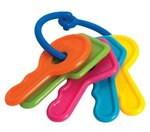Thanks for the heads up, Pace! I would shift down if I had to, but I tend to just make it without doing so, so I just leave it in 9th gear.
And, wow, if that's the case that 231 lbs. is total weight including bike and accessories (as I also now read it in the manual on p. 8), then most of us shouldn't even be riding these bikes. We have been sold a bill of goods by the dealers that is not up to par with the weight of a lot of us. Like Daniel said above, "...only girls can ride the Dash" and young boys at that! These bikes alone weigh in at 49 lbs, so that means a person can weigh about 172 lbs., with the gear no more than 10 lbs., for a total weight of no more than 182 lbs. The last time I weighed 182 lbs was when I was 17 years old. My ideal weight for my height is about 195, so even that won't work according to these specs. I also got this bike in the hopes of helping me to shed some weight. At my age it is very hard to get back to about 195, but I'm trying with proper diet and exercise. This bike is doing a pretty good job of pushing me forward considering my weight and all. And for that, I am pleased. Once I shed some of this weight I know I will be able to travel even further than I am now, and even ascend some grades a little easier. But even now on the flats I am getting roughly 35 miles on a charge in PAS 1. So I can't complain about that.
As far as the Peak is concerned, I was looking for something with a bigger motor than just 350 watts, and I am not too familiar with mid-drives. For my size I need a bigger wattage motor to get me up some steep grades around here. Plus, I didn't want a mountain bike. I was told the Dash is a hybrid between a mountain bike and a cruiser. Ideally, I was looking for a cruiser like the Path+, and the Dash seem to fit both worlds with also the added speed. I also raised the handlebars and brought them more forward to me, and had a cruiser type seat installed. With the plethora of bikes that are out there it gets a little overwhelming in trying to decide what best fits a person. My concerns from the data that I had gathered were getting the biggest motor possible with the strongest battery possible and the need for a bike to go at least 30 miles (for my weight) without pooping out on me. As I said above, for my weight I really need about a 865 watt motor to make it up a driveway such as mine that is 15 degrees, and I do have an electric 1000 watt scooter with a 48v/12ah lithium-ion battery that serves this purpose very well in order to get my mail without having to pedal (it's the old arthritis in the knee thing that prohibits me from walking). Bicycling doesn't seem to put the same forces on my knees that walking up and down my driveway seems to do to me.
Anyway, I guesstimated that the Dash would suit me well for what I need, and so far it seems to be doing just that---except for the BB sensor now not working to assist me in pedaling. I am now in the process of getting that resolved. One of the reasons I got this bike was because of the pedal assist. There are plenty of them out there that work in only throttle mode. Initially, I was also wanting a gear-driven motor in the hub rather than a gearless one that is in the Dash. That might have been better for torque. But this gearless motor on the Dash isn't all that bad...except for the "cogging" effect that tends to slow the bike down while freewheeling. But with all that said, it would have been nice to have been able to try a Peak to see how that might have worked for me. That's the problem, you cannot just go to your local bike shop and try one these out. You have to try and study all of this online and determine what is the best fit for you, along with your budget. So, price was another important issue for me. I wanted to keep this thing around $2000, or less. And I ended up paying a little bit more than I really wanted to for this Dash. The new 2015 models are around $2900 and getting way out of the ball park as far as affordability is concerned. Prices need to start coming down, not go up!
